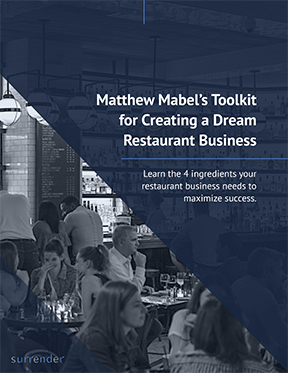
Proof of concept.
Knowing your restaurant brand has legs – that its single-unit economics can be repeated and repeated and repeated – is like that can’t-fail feeling Hillary Clinton felt the night before the election.
In the end, proof of concept doesn’t prove that success will follow, because no concept has permanent proof.
That’s just the laws of economics.
Still, the big money wants to evaluate proof of concept before investing.
But proof of concept becomes elusive if you do not keep pace with the market and competition.
Just ask Kona Grill or My Fit Foods.
Reasons to Grow
For my clients, their brand is their baby – and its DNA contains a growth gene.
They want to give this child the best life possible – lobbying teachers for good grades, enrolling them in extracurricular activities, and choosing the right college.
And everyone wants to build a great net worth for their families.
Matthew’s Five Thresholds of Growth
Over my almost three decades of advising growing restaurant companies I have identified five conditions for growth.
You need to handle all five of these before you grow your business – no matter what kind of “logic” you may talk yourself into:
- Solid brand
- Culture that attracts diners and employees
- Intentional strategy
- Single-unit economics
- Operations that work without relying on ownership
If you cannot check all those boxes, go back and work on your restaurants until you pass those tests, period.
Four Common Self-Delusional Growth Strategies
People often give the wrong reasons for wanting to grow.
Though these reasons seem to follow very logical thinking, they are really just generally accepted theories waiting to be debunked – like the Flat Earth theory or 10,000 Hours theory.
Here are some examples of what I mean by this faulty logic:
- Segmentitis: Your concept looks and feels like nothing else in its segment. This could be the best news possible, or the worst.
- Market Delusion: Your concept works in a small market/big market/home market. So it must work in a big market/small market/out of town.
- Growth as a Retention Tool: Your management team needs upward mobility or you will lose them.
- Growth for Cost Management: You seek economies of scale with management, purchasing, and marketing.
Over to you. What steps will you take to mitigate growth-related risk before you sign those new leases?

What’s the point of owning a successful restaurant business if you don’t have freedom?
Download Matthew Mabel's Freedom and Flexibility Guide for Restaurateurs to learn how to...
- Step away for extended periods of time
- Contribute to your community in a unique way
- Spend more time with friends and family
- Travel for weeks at a time
- Split your residence at a vacation home for several months a year

Want to grow your restaurant company past 3 units?
10 units?
20 units?
Enter your email address below to get our newsletter and the free guide to pushing through expansion barriers and mastering unit growth.

What would you rather own?
A good restaurant company?
Or one of the best restaurant companies in the world?
Enter your email address below to get our newsletter and the free toolkit to learn the 4 ingredients your restaurant business needs to maximize success.

Want to get the most enjoyment from the success you’ve worked so hard for?
Want to maximize your net worth in addition to your lifestyle?
Enter your email address below to get our newsletter and the free guide to learn how to bring experienced senior management into your company.
